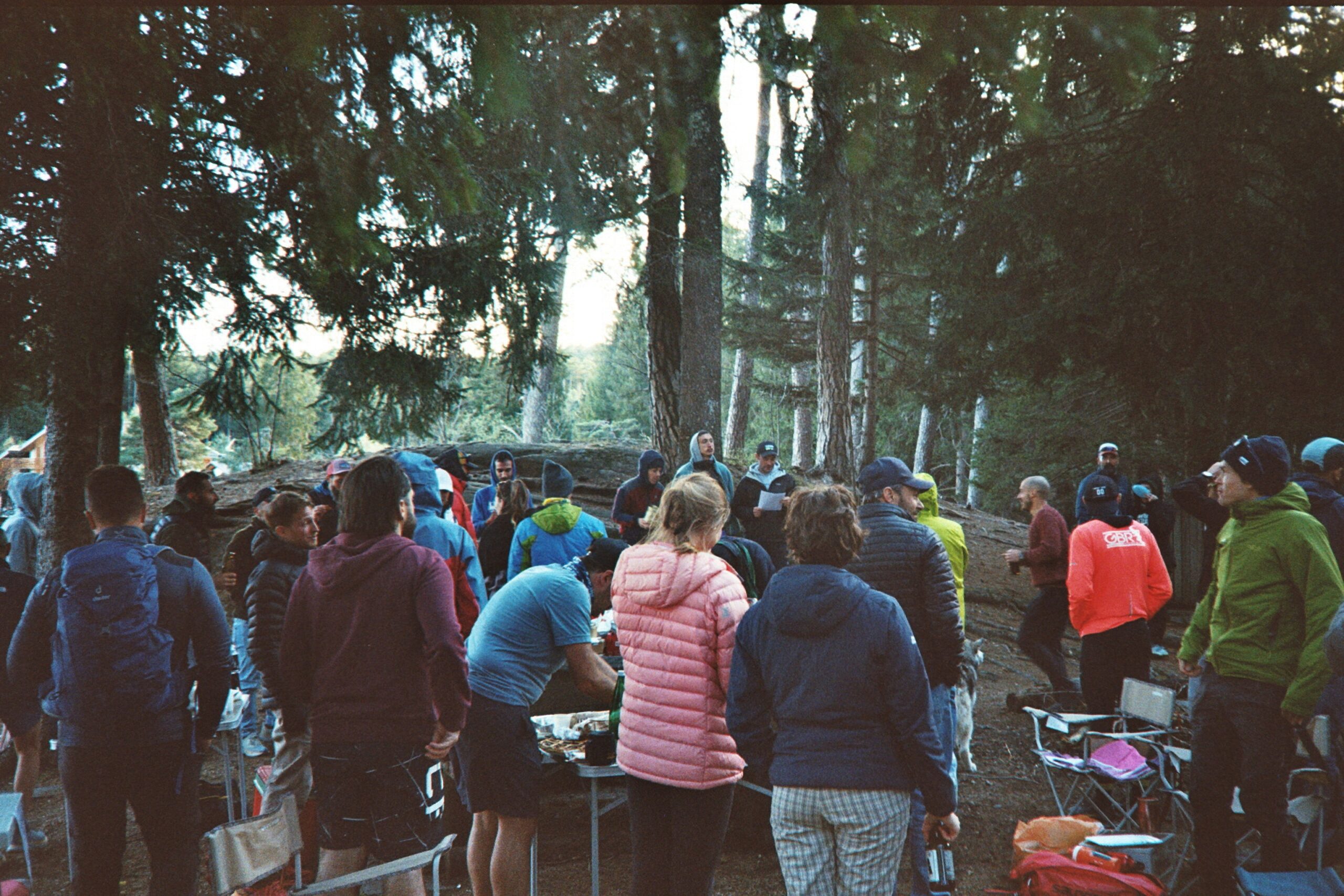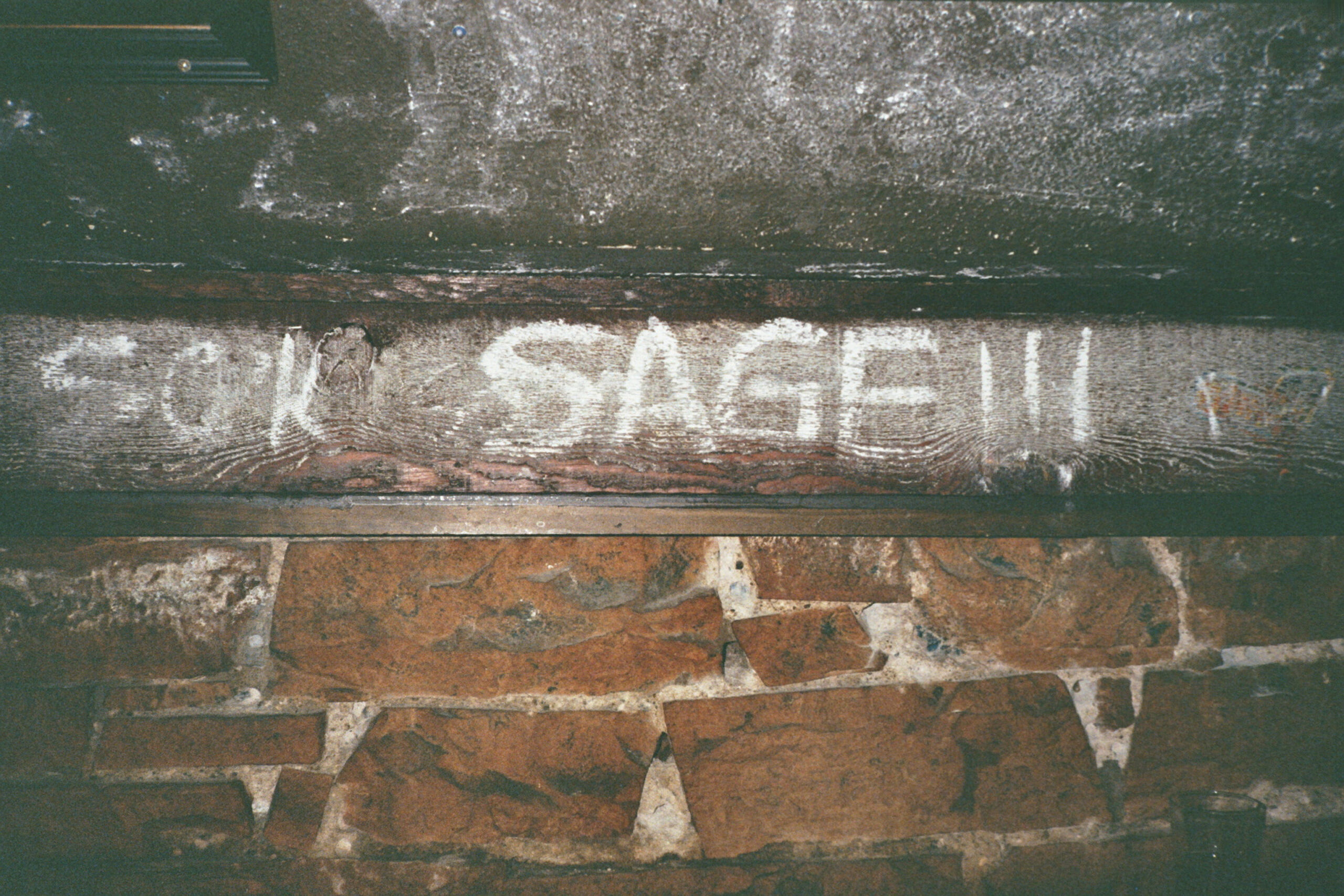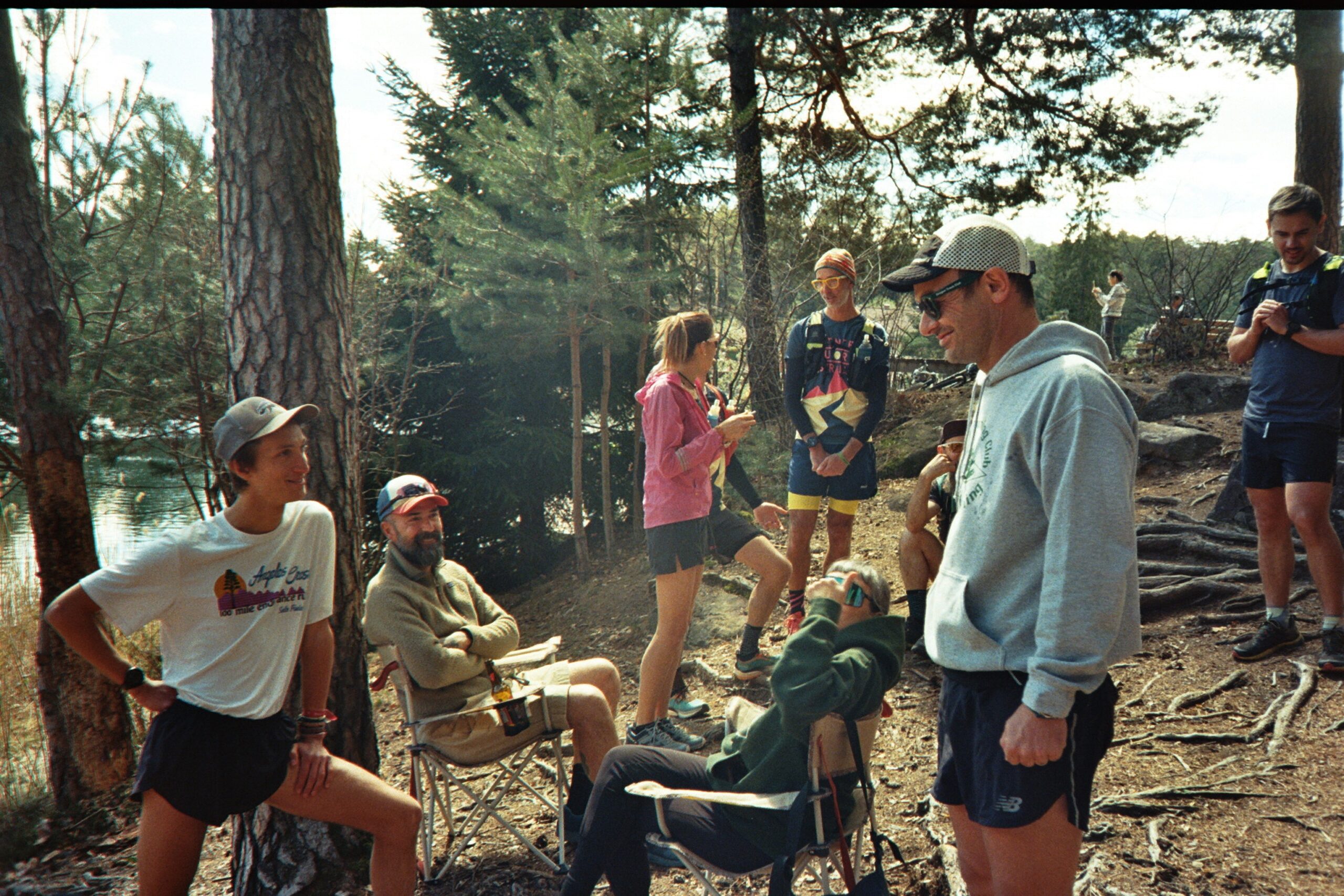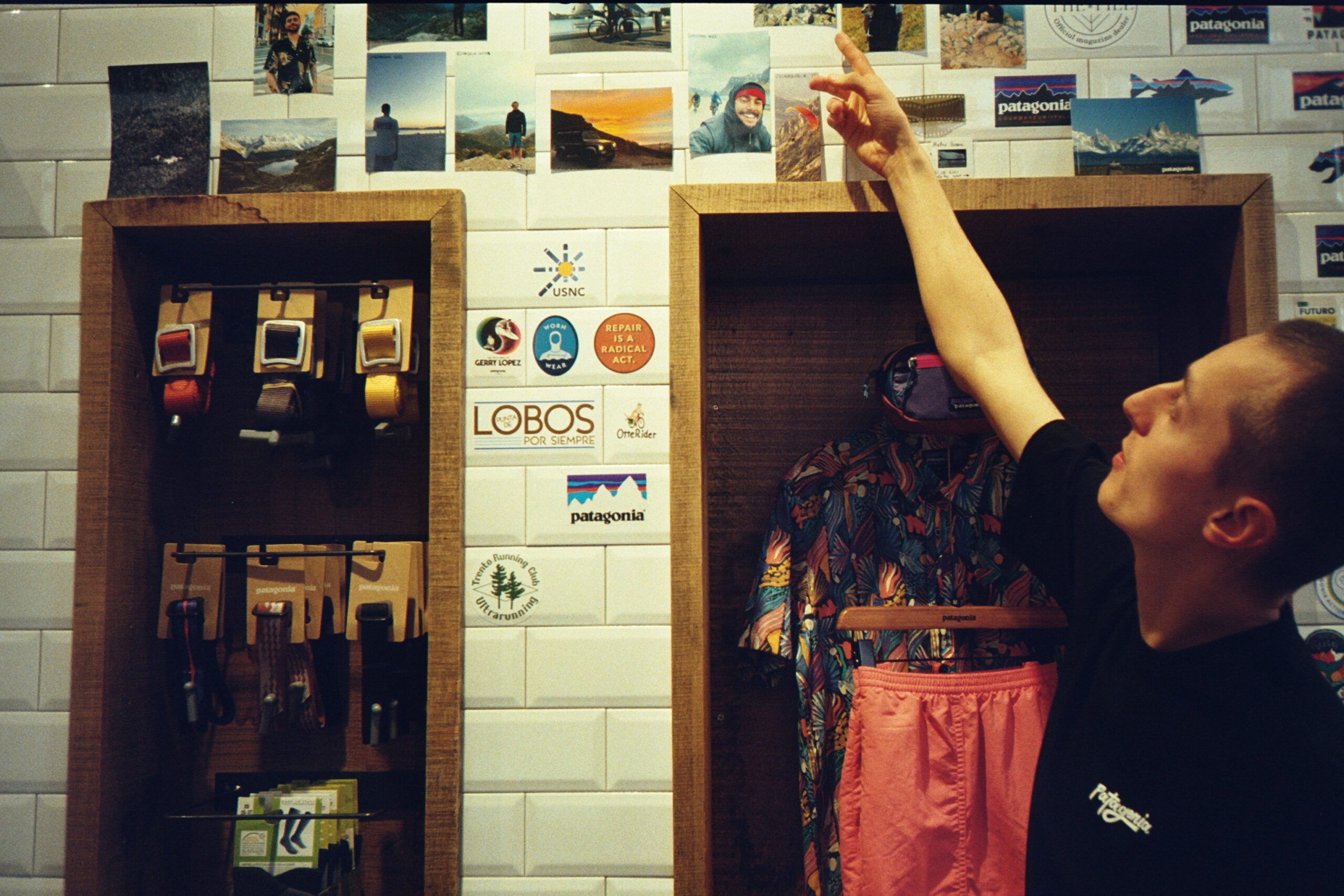
Changing a town by the dint of your running. This is what happened to Leadville, Colorado, after a 100-mile running competition was organised there in 1983. So how does sport transform cities? Ultramarathon runner and writer Filippo Caon recounts his first-hand experience of sport-focused places, from the Rocky Mountains of Colorado to the French and Italian Alps.
“Fourteen dollars?”
The owner of Leadville’s only coffee shop responds in amazement when told the price of a breakfast burrito in the rest of the state. It is a November morning. The rarefied air and clear skies of the 3000 meters altitude light up the white of yesterday’s roadside snow.
Leadville is an old mining town in the heart of the Rocky Mountains and the highest settlement in the United States. In the late 1970s, after the Vietnam War and with the molybdenum crisis–an element used for the production of steel alloys processed in the Leadville mines–Leadville saw the progressive closure of the town’s mines and rapid depopulation until the town was virtually removed from the map.
In less than a decade, Leadville turned into a Corbucci-style ghost town, where unemployment grew along with crime and alcoholism. In contrast to its nearby towns Aspen and Vail, Leadville had yet to develop as a tourist destination. The only thing you’d find there–at least as legend has it–was true grit. Grit then we’ll give it.
Ken Chlouber, a local miner, heard that a guy named Ainsleigh, in California, was organising a 100 mile foot race from Lake Tahoe to Auburn. In an effort to draw attention back to the city, Chlouber decided to organise something similar in Leadville and, if someone died trying, he said, at least they would put the country back on the map. In 1983, despite its mere 45 participants, the second 100-mile run in history was born. Contrary to all expectations, it was a success.
Forty years from that day, on this November afternoon, I walk along the town’s only paved street, and I notice a fair number of businesses, clubs and sports equipment shops. Sport has succeeded in reviving the local economy. And yet, Leadville itself has barely changed: it is still the Victorian town with red brick buildings that it was one hundred and fifty years ago.

“50k Sage” graffiti at Sundown Saloon, a dive bar in Boulder CO. The graffiti is almost surely referred to Sage Canadey, one of the most competitive American ultrarunner in the early 10’s, which lived in Boulder (courtesy The Pill).
Tourism hasn’t turned it into a fake or artificial place. It doesn’t look like a film set. A visitor wouldn’t wonder if the houses along the main street are just façades; there is no commodification of Native Americans with feather headdresses and no guided tours on horseback. Leadville is a place where people really live. And, as is often the case in tough places, the community is close-knit. The structural changes that have occurred to accommodate the wave of interest in the town galvanised by outdoor sports are evident. Nonetheless what characterises Leadville today is the spirit of redemption and hope – both individual and collective – that sport itself has helped to create. Possibly for this reason, Leadville resists the usually inevitable forces of globalisation that would dilute its true character.
As it happens, some places turn into laboratories for what occurs in the rest of the world five or ten years later. For people who go to the mountains, that place is Boulder, a small Colorado town a couple of hours’ drive northeast of Leadville. It is not far from Denver, the state capital, which, like all American, is gradually expanding, encompassing everything around it. Boulder is an autonomous city, with its own university, a football team, a website and about 120,000 inhabitants.
On the edge of the Great Plains and at the foot of the Colorado Rocky Mountains, the highest mountain range in the country, Boulder is close to one of the busiest international airports of the USA, it has a continental climate and plenty of great places for sport: cliffs, canyons, plateaus, prairies, streams, forests and 4,000-metre peaks.
Thanks to all these characteristics, in recent years, Boulder has become a small, yet popular, destination for mountain sports. Its population seems to have gradually standardised itself accordingly, with bike and outdoor clothing shops, organic cafés, craft breweries and ethnic restaurants beginning to pop up. The average cost of living also rose, marginalising all those who did not have the means to deal with the gentrification process.
In the last decade, this nascent community– white, progressive, environmentalist and outdoorsy–has established its own lifestyle, with its myths and must-haves. The fetishes that used to characterise the mountaineers of the 1970s are now the status symbols of a new middle class, only slightly more hip and eccentric. “The place called Boulder on the wild Colorado” is now a polished, Californian style suburb, and unlike Leadville, where the local true grit had resisted internationalisation, Boulder has completely transformed itself in only a decade, redefining the meaning of outdoor sports–from weird to bougie.
Around the United States, something very similar is happening in Flagstaff, Arizona; Mammoth Lakes, California; and Portland, Oregon. Yet Boulder represents the place where all this started and, in a way, failed. Being “outdoorsy” has become a status symbol–a synonymous with progressivism and environmentalism.
At first glance, it looks as if every revolution that started in the west crashes on the other side of the Rocky Mountains, leaving just the foam. There’s no doubt that the cities I visited have evolved around an outdoorsy culture, but they’re almost crystallising into passive forms of consumption, as visible in both urban organisation and landscape. Still, albeit slowly, something on the shoreline moves. Maybe I can better explain this feeling by looking at home, Europe.

Making a phone call in Place Balmat, Chamonix-Mont Blanc, during the 2021 Ultra Trail du Mont-Blanc week. UTMB is the biggest trail running event in the world.
If we imagine that the outdoorsy way of life follows a parabola from east to west, looking at Chamonix, France, can give us a clear idea of where Europe is on the curve. Since the first ascent of Mont Blanc in 1786, Cham–as those who go there regularly call it–has been a Mecca for mountaineering, and the many ways in which sport has shaped the city’s economy and physiognomy are evident.
Today, Chamonix is an athlete-friendly town, with sports facilities of all kinds, an open athletics track, basketball courts, skate parks, communal forests (forests! Not parks), organic cafés, breweries and equipment shops. In contrast to other resorts in the Alps, such as Cortina, Sankt Moritz or Courmayeur, Chamonix has other sports that are popular besides downhill skiing: mountaineering in all its forms, snowboarding, skateboarding and mountain running. The scars inflicted on the city by decades of mass tourism can be clearly seen: as a result of the creation of the Mont Blanc tunnel in 1965 already, large hotels have sprouted to accommodate the huge tourist influx (2.7 million visitors per year in a town of 10,000), while tourist sites like the Mer de Glace have become overcrowded. Luckily, this model seems to be gradually being abandoned and is now distant from the city’s new inhabitants.1
This change is owed to them. Places like Cortina and Courmayeur have their seasonal cycles: people arrive, spend two or three weeks there and then leave–usually older people, and those who can afford it (we, on the other hand, spend a day or two at most, sleeping in the car). Conversely, some spend a considerable part of their lives in Chamonix. It is not uncommon for athletes to settle here for a few years and then migrate elsewhere when things get dull. Even Cham, after all, starts to feel cramped at some point. Only a few stay for life, while many die there prematurely. Yet they all bring services, job opportunities, an economy and most of all, a particular mindset.
One night in August, I met the prototype of this modern chamoniard–the one who moves in, lives there, works there, and eventually leaves. It was in a hipster burger joint on Avenue Michel Croz, the only place open at that hour except McDonald’s. The garçon moved to Chamonix to snowboard in the winter and skateboard in the summer, working at Roster’s to support himself while he practices sport. Like him, dozens of other youngsters have transformed Chamonix into something more modern, vibrant, and complex.
Nevertheless, as it moved eastward, the Colorado-born wave has lost its idealistic and political thrust, and only its most outward aspects seem to have survived. In Chamonix, people seem to be less aware of being part of a peculiar cultural movement. Still, it’s an example of how a city’s economy can be shaped by a sports-based way of living, even if it probably happened in organic and unplanned way.
I reflect on all this while sitting in a coffee shop in Trento, Italy, as I drink an acidic, expensive coffee. At the other tables, people are studying and working on their laptops. It’s been a couple of hours and I feel the waitress starting to put pressure on me: they play at being American, but then ask you to leave.
It’s a hipster cafe in Albere, the city’s most gentrified neighbourhood. It was designed by Renzo Piano ten years ago, yet is still largely uninhabited due to mismanagement. Trento, like Boulder, has a little more than 120,000 people; it is wealthy, international and progressive. Like Boulder, it sits in the foothills of the mountains but is just as well-serviced as those cities in the Po Valley; it has its own university with its non-voting, non-statistical twenty-somethings that, nonetheless, have a strong impact on the local economy and even more so on the housing market.
Trento is not only one of the few mountain cities in Italy, but it has also developed a lifestyle that matches its surroundings: there are two climbing gyms in the municipality, a ski area with lifts, two peaks over 2,000 m and two over 1,000 m.
There are shelters, bivouacs, huts, and cottages; there are also the headquarters of the Tridentine Mountaineers Society and six other subsections for each of the city’s districts–on the east hill alone there are two, a mile apart from each other. There is a Natural Science Museum specialising in alpine environments, a glaciological club, and two alpine rescue helicopters that constantly fly over the valley, creating one of the city’s most distinctive soundscapes.
There are three festivals dedicated to mountain life, there are specialised bookstores and equipment shops. Mountains are rooted in the collective imagination, in the soundscape, in the urban landscape, in clothing.

Runners during a DIY running event in Trento. There are many new self-proclaimed sport groups in Trento, operating for a new vision of outdoor sports.
Yet if in Boulder the outdoorsy lifestyle is associated with identification–that is, with a sense of belonging to a single, new social segment whose needs are similar in terms of lifestyle, political orientation, and cultural horizons – in Trento, it instead has to do with collective identity. Rather than a consciously embraced lifestyle, it is an interclass phenomenon with a deeper historical roots and heritage.
In short, whereas in Boulder, outdoorsy is the effect of a cultural movement that people recognise and adopt, in Trento it is the result of the succession and sedimentation of decades of different cultural phenomena. Precisely for this reason, a truly cohesive outdoor movement does not exist in Trento.
This does not mean that Trento is impermeable to the trends of the US movement. The Trento Film Festival, for instance, one of the first film festivals in Italy and known for its mountain-related themes, was in the 1970s one of the main bridges between California’s climbing counterculture and the new generation of Trentino mountaineers.
But Trento lacks the collective awareness, even a somewhat naive one, of belonging to the same social segment capable of having an impact on the city and the way it is lived. The European approach is more individual and detached from an idea of community. You can see this clearly in how sporting events are experienced: in the American running environment, it’s not unusual for amateurs to run races as athletes and directly take part in the organisation of events–whether as an assistant or as a volunteer, including the cleaning of running trails.
Practicing a mountain sport in the United States means actively contributing to its perpetuation, moving between consumer to active participant. This participatory attitude also translates into political and environmental activism: race organisations, companies, professional athletes and local clubs in the United States are constantly promoting policies aimed at improving the lives of enthusiasts in general, not just in terms of sport.
If not absent, this activism is latent in Europe. Were it not so, it would not be unthinkable to imagine Trento with more bicycle paths, better sports facilities and, more generally, a varied and flourishing “outdoor” economy. New generations are physiologically changing things in this direction, and in recent years a number of groups, collectives and associations that use mountain sports (climbing being at the forefront) to convey new lifestyle concepts have sprung up.

A Patagonia store employee shows the pictures hung on the store wall, Trento.
The fact remains that the long wave coming from the west has lost the power that propelled it on its way; and what has arrived here is only foam. However, swell after swell, something is changing: athletes are travelling more, technical information is evermore accessible, and the outdoor lifestyle that characterises parts of the US has now started to be understood, at least in part, even here in the Italian Alps.
In this respect, the Italian and European communities are relatively backward, but I think that in the coming years, in places like Trento, where mountains are a focal point for communities, people who care about our cities’ development from this perspective will emerge–with all their advantages and, of course, all their contradictions and problems.
Footnotes & references
[1] Chamonix se prépare déjà à un tourisme alternatif, La Quotidienne, https://www.laquotidienne.fr/chamonix-se-prepare-deja-a-un-tourisme-alternatif/
Recent articles

Southern California is many things. Quite infamously, it is known as a landscape defined by the automobile, from the emergence and diffusion of the highway system to fast food burgers, and the suburbanization of the United States. Walking this place then, would seem not only inconvenient, but ill advised. In… Read more »

What is today known as ‘whistleblowing’ could once take the form of interacting with a threatening gaze carved into the city wall. It is the case of the ‘boche de Leon’ or ‘lion’s mouths’ disseminated by the old Venetian Republic throughout its territory to suppress illegal activities. Through a close… Read more »

As he navigates through the recurrent lockdowns of the pandemic, stranded between hitchiking and muggings, job hunting and separations, Fabio Valerio Tibollo rediscovers photography as a powerful coping mechanism. Recording everything that happened around him for one year straight, from attending momentous events to finding curiosity in shots of simple living,… Read more »

